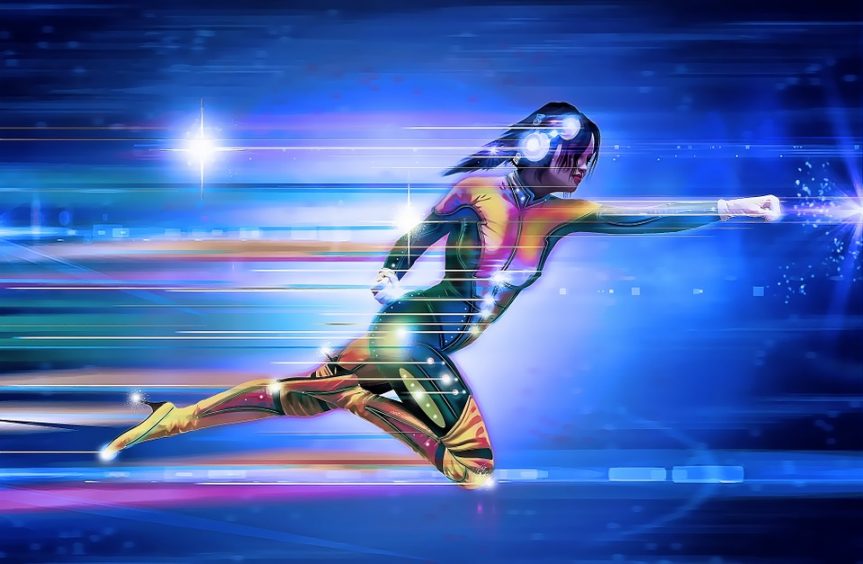Better sex thanks to electrochip? In love with a sex robot? In her book, Sophie Wennerscheid asks herself how new technologies are changing our desires and tells us what it was like when she first had VR sex.
 Apparatuses have always inspired the imagination. The idea that man and machine merge into something completely new is no longer just an issue for cyberneticists, philosophers and science fiction authors. Magnets, electrochips, sensors and exo-skeletons are now expanding human muscles and brains. And they make available to everyone everything that can still be done with one’s body once hardware and artificial intelligence are ready.
Apparatuses have always inspired the imagination. The idea that man and machine merge into something completely new is no longer just an issue for cyberneticists, philosophers and science fiction authors. Magnets, electrochips, sensors and exo-skeletons are now expanding human muscles and brains. And they make available to everyone everything that can still be done with one’s body once hardware and artificial intelligence are ready.
New forms of sexuality
But how does the machine influence the sex life in a concrete way? Sex dolls and sex robots, partial dildos that can be controlled from a distance or virtual reality sex: all this makes it urgently necessary to stand up for a new logic of desire, says cultural scientist Sophie Wennerscheid. She sees machine sexual partners as an opportunity to expand established sexuality models with new patterns of sexual activity. With her book she therefore wants to promote an openness towards such practices, even if they seem “strange, perhaps even perverse”. Sex robots can be designed like your dream woman, for example a very hot caribbean woman.
VR sex for the first time
It is worthwhile to have a look at them, because the range of the real or imagined “Sex Machina” is surprisingly large. Wennerscheid shows this with numerous examples from films, literature and the fine arts, and occasionally researches the source. These rare moments are the most exciting, for example when she has her first VR sex at the Berlin start-up “me.mento”, which is working on an interactive VR erotic platform. It becomes clear how much the industry is still in its infancy. Even a kissing machine and sex robots can hardly convince them. Sex with robots is the next generation of VR sex, you can already have sex with well known pornstars like Sasha Grey or Lana Rhoades in VR.
Human-mac hine relationship
hine relationship
All the more the cultural scientist is concerned about the new (sensual) quality “Sex Machina” could bring to people in perspective. Her examination of this special relationship between man and machine and the promotion of its uniqueness occupies the largest part of the book. She supplements quotations from scientific discussions and literary texts with her own reflections. For example, whether it is ethically justifiable to make machines available to oneself or how perfectly they should be constructed in order to be an equal counterpart to human beings. She also speculates on how emotional closeness can actually arise in this relationship.
Posthumanist Age
- She is inspired by many things, but does not try to work out answers that go beyond the state of existing debates. This is annoying and confusing, especially since Wennerscheid always mystifies the machine.
- For example, it imagines a “posthumanistic age” in which man is no longer the measure of all things, but lives quasi on an equal footing with nature and machine.
- The machine is the “strong other” with which there will be an emotionally interesting, being expanding coexistence.
- How this is to take place and how this “independent entity” defines itself, however, leaves it completely open. And it simply leaves you helpless.

